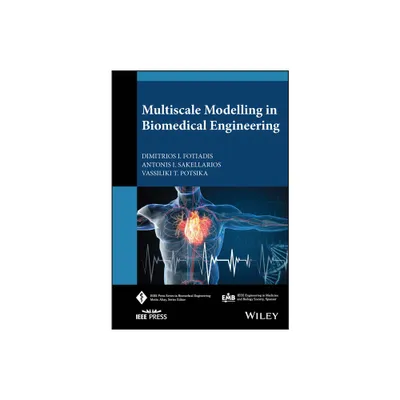Home
Mastering Biomaterials: A Comprehensive Guide for Biomedical Engineering Students
Loading Inventory...
Barnes and Noble
Mastering Biomaterials: A Comprehensive Guide for Biomedical Engineering Students
Current price: $19.00


Barnes and Noble
Mastering Biomaterials: A Comprehensive Guide for Biomedical Engineering Students
Current price: $19.00
Loading Inventory...
Size: OS
*Product Information may vary - to confirm product availability, pricing, and additional information please contact Barnes and Noble
Biomaterials play a crucial role in the field of biomedical engineering, offering innovative solutions for a wide range of medical applications. From artificial organs to drug delivery systems, biomaterials have revolutionized healthcare and continue to shape the future of medicine. In this subchapter, we will delve into the fundamental aspects of biomaterials, providing students of biomedical engineering with a comprehensive understanding of this exciting field.
Firstly, it is important to define what biomaterials are. Simply put, biomaterials are materials that interact with biological systems, either as a whole or at the molecular level. These materials can be natural, such as collagen or silk, or synthetic, such as polymers or ceramics. Understanding the properties and characteristics of different biomaterials is crucial for designing and developing successful biomedical devices and implants.
We will explore the various types of biomaterials commonly used in biomedical engineering, including metals, ceramics, polymers, and composites. Each material has unique properties and advantages, which make them suitable for specific applications. For example, metals like titanium are commonly used for orthopedic implants due to their excellent mechanical properties, biocompatibility, and corrosion resistance.
Furthermore, we will discuss the interactions between biomaterials and the human body. When a biomaterial is implanted or used in a medical device, it interacts with the surrounding biological environment, which can elicit various responses. These interactions can be classified into four categories: mechanical, chemical, physical, and biological. Understanding these interactions is crucial for predicting the behavior of biomaterials inside the body and ensuring their safe and effective use.
Additionally, we will examine the biocompatibility of biomaterials, which refers to their ability to perform their desired function without causing any adverse reactions in the body. Biocompatibility is a complex concept that involves multiple factors such as cytotoxicity, immunogenicity, and hemocompatibility. We will explore the various tests and standards used to evaluate the biocompatibility of biomaterials, ensuring that students have a comprehensive understanding of this critical aspect.
Finally, we will discuss the future trends and advancements in biomaterials. From tissue engineering to smart biomaterials, the field is rapidly evolving, opening up new possibilities for biomedical engineering. Understanding these trends will not only enhance students' knowledge but also inspire them to contribute to the future of biomaterials and healthcare.
Firstly, it is important to define what biomaterials are. Simply put, biomaterials are materials that interact with biological systems, either as a whole or at the molecular level. These materials can be natural, such as collagen or silk, or synthetic, such as polymers or ceramics. Understanding the properties and characteristics of different biomaterials is crucial for designing and developing successful biomedical devices and implants.
We will explore the various types of biomaterials commonly used in biomedical engineering, including metals, ceramics, polymers, and composites. Each material has unique properties and advantages, which make them suitable for specific applications. For example, metals like titanium are commonly used for orthopedic implants due to their excellent mechanical properties, biocompatibility, and corrosion resistance.
Furthermore, we will discuss the interactions between biomaterials and the human body. When a biomaterial is implanted or used in a medical device, it interacts with the surrounding biological environment, which can elicit various responses. These interactions can be classified into four categories: mechanical, chemical, physical, and biological. Understanding these interactions is crucial for predicting the behavior of biomaterials inside the body and ensuring their safe and effective use.
Additionally, we will examine the biocompatibility of biomaterials, which refers to their ability to perform their desired function without causing any adverse reactions in the body. Biocompatibility is a complex concept that involves multiple factors such as cytotoxicity, immunogenicity, and hemocompatibility. We will explore the various tests and standards used to evaluate the biocompatibility of biomaterials, ensuring that students have a comprehensive understanding of this critical aspect.
Finally, we will discuss the future trends and advancements in biomaterials. From tissue engineering to smart biomaterials, the field is rapidly evolving, opening up new possibilities for biomedical engineering. Understanding these trends will not only enhance students' knowledge but also inspire them to contribute to the future of biomaterials and healthcare.


















